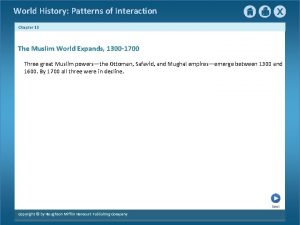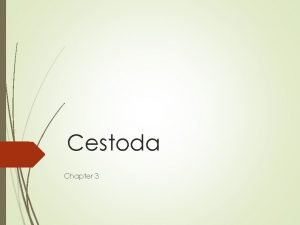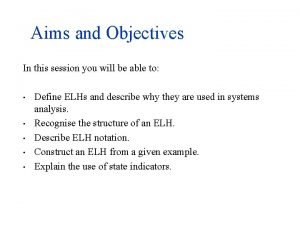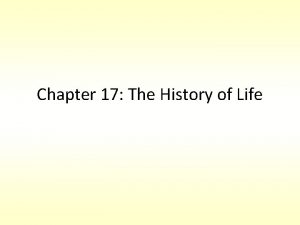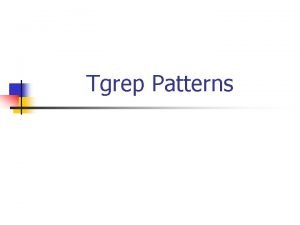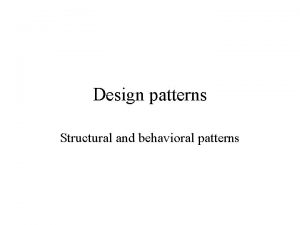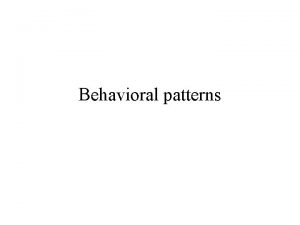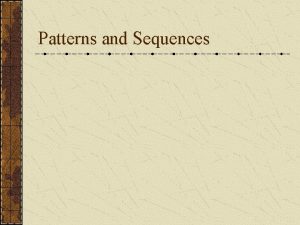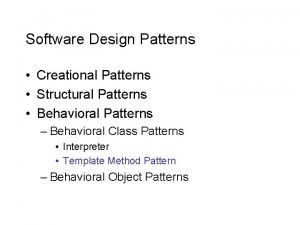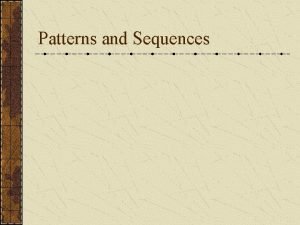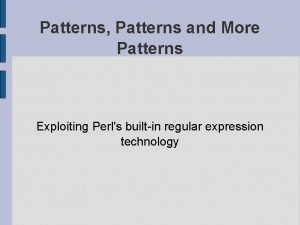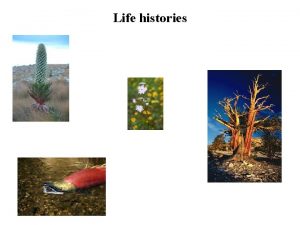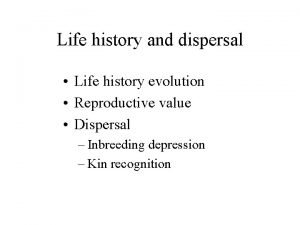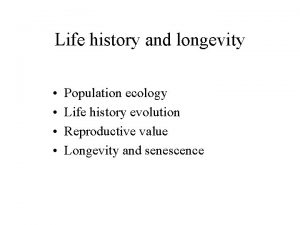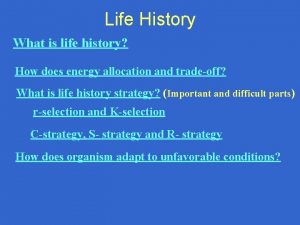Life History Patterns Ch 10 Life history patterns




















- Slides: 20

Life History Patterns Ch. 10 • Life history patterns = how they reproduce • Maturity = age at first reproduction • Parity = # of times an organism reproduces • Fecundity = # offspring per reproduction • Mortality = death rate • Parental care

Inverse relationship between fecundity and parental care Parental care high ? low high low fecundity

Inverse relationship between fecundity and parental care Parental care high low fecundity

r vs. k selection r-selected k-selected Many small offspring Rapid development Short lived Poor competitors Fast dispersers Little parental care Fewer offspring Slow development Long lived Good competitors Slow dispersers Much parental care Examples? ? Weeds ants Examples? ? Trees bears r-selected = opportunistic k-selected = equilibrium

altricial vs. precocial • Altricial = helpless and featherless 2 -10 eggs per clutch • Precocial = ready to follow parents 8 -20 eggs per clutch (clutch = nest of eggs)

Reproduction Plants: Annuals = lives one year Perennials = live more than one year Semelparity = one reproductive effort per lifetime Also called “big bang reproduction, ” “programmed death” i. e. agave (century plant), yucca, salmon Iteroparity = more than one reproductive effort per lifetime Senescence = age, causes decline in fecundity

Mating systems • Monogamy = pair bond between one male and one female • Polygamy = one individual forms pair bonds with many others Polygyny = male mates with more than one female Polyandry = female mates with more than one male • Promiscuity = mate with many, no pair bonds

Monogamy Rare in mammals Common in Birds

Polygyny – one male with many females Common in mammals

Polyandry – one female with many males rare female Since females attract mate, they are larger And more colorful than male Wilson’s phalaropes

Promiscuity – no pair bonds Lek = common mating area Prairie Chicken Male sage grouse

Sexual Selection = choice of one sex by another Sexual Dimorphism = males and females look differently • Color- males more brightly colored • Ornamentation- antlers • Size (if female larger = reverse sexual dimorphism) Hamilton-Zuk Hypothesis More brightly colored males have less parasites (healthier)

Territorial Behavior


Calling

Chasing

Fighting



Sibling Competition
 Obj dating
Obj dating Closed patterns and max-patterns
Closed patterns and max-patterns World history patterns of interaction
World history patterns of interaction Chapter 20 section 4 world history
Chapter 20 section 4 world history World history patterns of interaction
World history patterns of interaction World history patterns of interaction
World history patterns of interaction Also history physical
Also history physical Hazrat ibrahim family tree
Hazrat ibrahim family tree Lec hardver
Lec hardver Real life dystopia
Real life dystopia Schistosoma life cycle stages
Schistosoma life cycle stages Taenia saginata
Taenia saginata Chapter 36 population ecology
Chapter 36 population ecology Hhmi deep history of life on earth
Hhmi deep history of life on earth H nana
H nana Iteration control structures
Iteration control structures Aerobic bacteria
Aerobic bacteria Section 17-4 patterns of evolution
Section 17-4 patterns of evolution Life history
Life history The history of life section 1 fossil evidence of change
The history of life section 1 fossil evidence of change Tuzo wilson
Tuzo wilson




